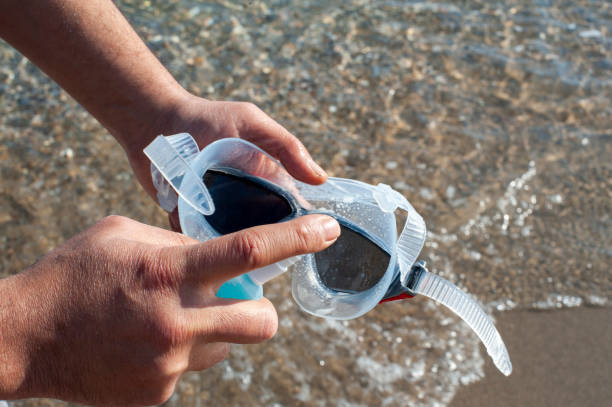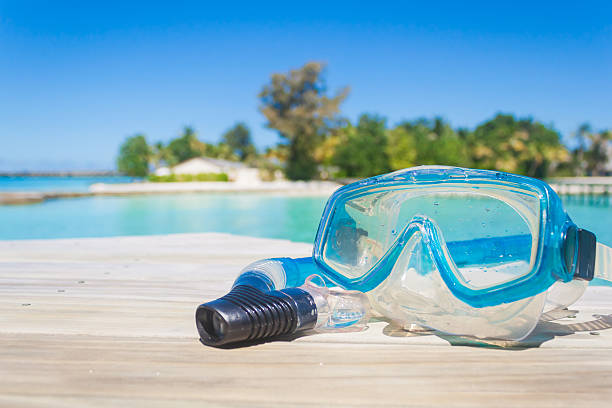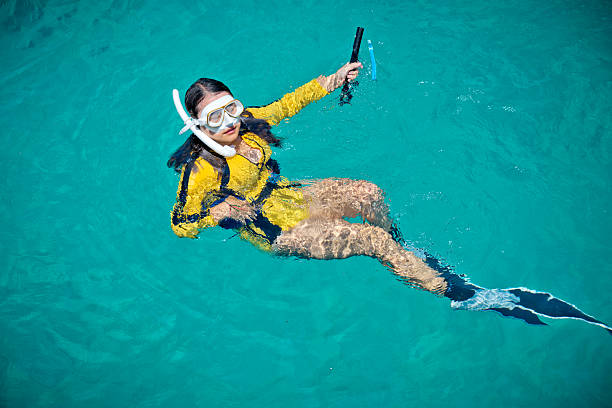Добро пожаловать в раздел, посвящённый плаванию в открытой воде! Как опытные гиды для новичков, мы понимаем волнение и неуверенность, связанные с погружением в этот захватывающий вид спорта. В этом руководстве мы поможем вам выбрать лучший гидрокостюм для новичков в плавании в открытой воде. Наши дружелюбные и доступные советы придадут вам уверенности и подготовят к вашим водным приключениям. Разбираетесь ли вы в терминологии или ищете советы по выбору идеального гидрокостюма, считайте меня своим надёжным спутником в этом совместном путешествии. Давайте нырнем и подберём лучший гидрокостюм для ваших занятий плаванием в открытой воде!
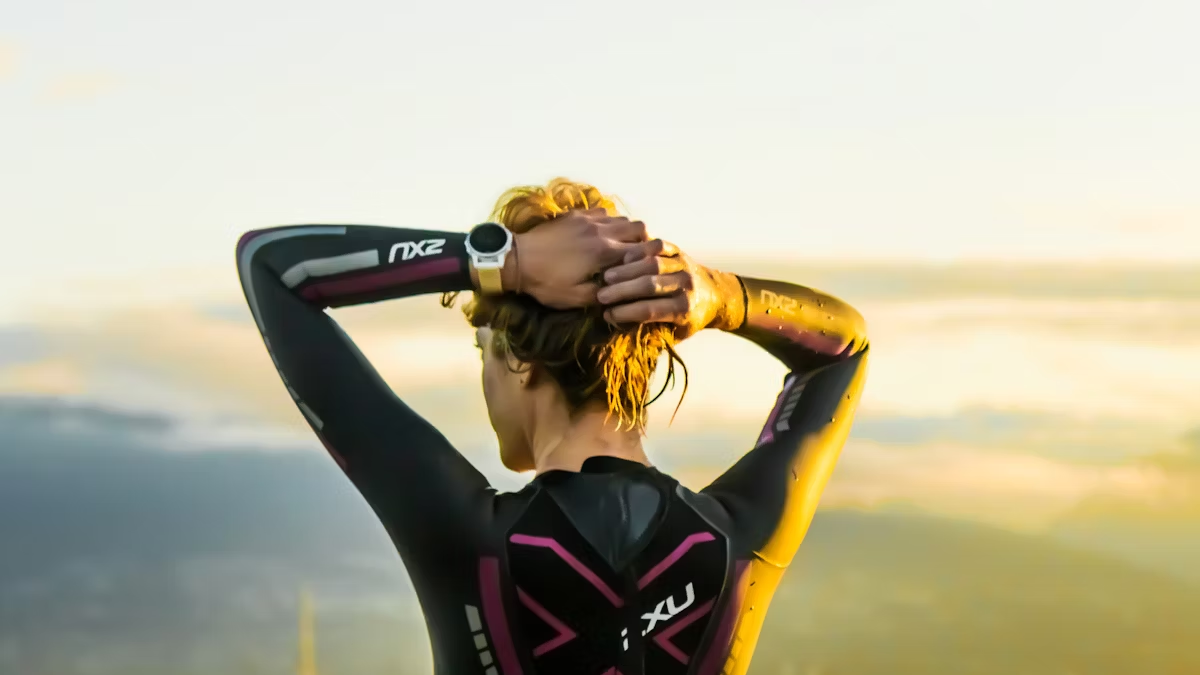
Главное — подгонка
Лучшие гидрокостюмы для плавания, которые идеально вам подходят, могут повысить ваш комфорт и существенно повлиять на ваши результаты в воде.
Советы по обеспечению правильной посадки
- Попробуйте перед покупкой: Перед покупкой рекомендуется примерить разные гидрокостюмы, чтобы оценить их на себе. Походите, потянитесь и имитируйте плавательные движения, чтобы оценить комфорт и гибкость.
- Проверьте диапазон движения: Убедитесь, что в гидрокостюме ваши руки и ноги не испытывают ограничений в движении. Движения не должны быть ограничены или скованы.
- Проверка пломб: Обратите внимание на уплотнения в области шеи, запястий и лодыжек. Эти области должны обеспечивать плотное прилегание, не вызывая дискомфорта или сдавливания.
- Обратитесь за профессиональной консультацией: Если вы не уверены в размере или посадке, не стесняйтесь обратиться за советом к экспертам в магазинах товаров для плавания или спортивных магазинах, специализирующихся на водном снаряжении.
Почему идеальная посадка не подлежит обсуждению
Неправильно подобранный гидрокостюм может сковывать движения и вызывать дискомфорт, что затрудняет эффективное плавание. Представьте, что вы пытаетесь скользить по воде в гидрокостюме, который слишком туго облегает плечи или слишком свободно облегает торс, — это всё равно что плыть против течения.
Исследования показали, что ношение правильно подобранного гидрокостюма может улучшить ваши результаты плавания. 3-5% По сравнению с ношением неправильно подобранного размера. Это улучшение эффективности объясняется оптимальным диапазон движения благодаря правильно подобранному костюму вы сможете двигаться в воде более свободно и энергично.
Чтобы подобрать гидрокостюм идеальной посадки, при выборе учитывайте такие факторы, как рост, вес и обхват груди. Многие бренды предоставляют таблицы размеров, которые помогают подобрать подходящий размер на основе этих параметров. Эти таблицы помогут вам подобрать гидрокостюм, который плотно облегает тело, но не сдавливает его.
Узнайте, какое покрытие вам необходимо
Прежде чем выбрать идеальную экипировку для плавания в открытой воде, следует изучить различные варианты покрытия гидрокостюмов. Каждый тип покрытия обладает уникальными преимуществами, подходящими для различных условий плавания и личных предпочтений.
Полная длина
А гидрокостюм полной длины Обеспечивает обширную защиту от шеи до щиколоток, обеспечивая максимальную защиту от холодной воды и возможных ссадин. Этот гидрокостюм — лучший вариант для плавания в холодной воде, поэтому его предпочитают пловцы, которым требуется повышенное тепло и плавучесть Во время длительных заплывов. Исследования показали, что ношение гидрокостюма может привести к значительному увеличению скорости, начиная от 3.2% до 12.9% на различных дистанциях и продолжительности, что делает его популярным выбором для пловцов-профессионалов, стремящихся улучшить свои результаты.
Весна/Коротышка
На другом конце спектра, пружинный/короткий гидрокостюм Укороченные штанины и рукава обеспечивают меньшую защиту, но при этом обеспечивают теплоизоляцию при умеренной температуре воды. Этот тип гидрокостюма обеспечивает большую свободу движений по сравнению с полноразмерными гидрокостюмами, что делает его подходящим для пловцов, ценящих ловкость и гибкость гребков. Энди, эксперт по плаванию на открытой воде, подчёркивает важность сохранения широкой амплитуды движений во время заплывов, отмечая ценность гибкости при проектировании гидрокостюма.
Короткая без рукавов
Для пловцов, которым требуется минимальное покрытие и максимальная мобильность, короткий гидрокостюм без рукавов — отличный выбор. Этот фасон оставляет руки полностью свободными для неограниченных движений, обеспечивая при этом тепло и плавучесть. Исследования показали, что использование гидрокостюмов без рукавов может положительно влиять на биомеханические параметры, связанные с эффективностью плавания, повышая эффективность в воде.
Без рукавов
Купальник без рукавов — это универсальный вариант, который обеспечивает свободу движений и необходимое тепло для плавания в открытой воде. Этот фасон популярен среди пловцов, которые ценят гибкость и свободу движений рук во время занятий в воде.
Эксперт Энди, известный своим опытом в плавании на открытой воде и в бассейне, подчёркивает важность поддержания хорошей амплитуды движений и плавучести, особенно на финальных этапах соревнований. Гидрокостюм без рукавов позволяет пловцам эффективно продвигаться в воде, не испытывая помех со стороны рукавов, поддерживая оптимальную механику гребков и скорость.
Таким же образом, исследования показали что использование гидрокостюмов без рукавов может положительно влиять на биомеханические параметры, связанные с эффективностью плавания. Полностью освобождая руки, этот стиль способствует естественному стилю плавания и повышает общую эффективность плавания в воде. Способность двигаться без ограничений критически важна для пловцов, стремящихся улучшить свои результаты и выносливость на открытой воде.
Материал гидрокостюма имеет решающее значение
Когда дело доходит до выбора лучший гидрокостюм Для плавания в открытой воде крайне важно знать материалы, используемые в конструкции гидрокостюмов. Основной материал, из которого изготавливается большинство гидрокостюмов, — это неопрен, синтетический каучук, известный своими изоляционными свойствами и гибкостью.
Материалы, из которых изготовлен гидрокостюм, играют решающую роль в комфорте, эффективности и долговечности вашей экипировки. Основным материалом, из которого изготавливается большинство гидрокостюмов, является неопрен — синтетический каучук, известный своими теплоизолирующими свойствами и гибкостью.
Неопрен: сердце вашего гидрокостюма
Неопрен — краеугольный камень современных гидрокостюмов, поскольку он обеспечивает теплоизоляцию, сохраняя при этом гибкость в воде. Этот материал удерживает тонкий слой воды между вашим телом и гидрокостюмом, который затем нагревается от температуры вашего тела, создавая барьер против холодной воды снаружи. Толщина неопреновый купальник определяет его теплоизоляцию и плавучесть, что делает его ключевым фактором при выборе подходящего гидрокостюма. Именно поэтому полноразмерный гидрокостюм может улучшить результаты плавания на 3,2–12,9% на разных дистанциях и продолжительности.
Неопрен: гибкость и долговечность
Помимо обеспечения теплоизоляции, неопрен играет важнейшую роль в обеспечении гибкости и долговечности гидрокостюма. В обзоре, посвященном эффективности плавания и эффекту гидрокостюма, было отмечено, что по сравнению с традиционными купальниками, использование гидрокостюма может улучшить результаты плавания на 31–101% от 3% до 3 ...
Более того, плавательный неопреновый костюм выдерживает суровые условия плавания в открытой воде, не теряя со временем своей функциональности. Высококачественный неопрен устойчив к истиранию и разрывам, сохраняя форму и целостность при многократном использовании.
Сочетать с плавательным оборудованием
Готовясь к плаванию на открытой воде, важно продумать, как ваш гидрокостюм будет дополнять другое плавательное снаряжение, чтобы оптимизировать ваши результаты и комфорт в воде.
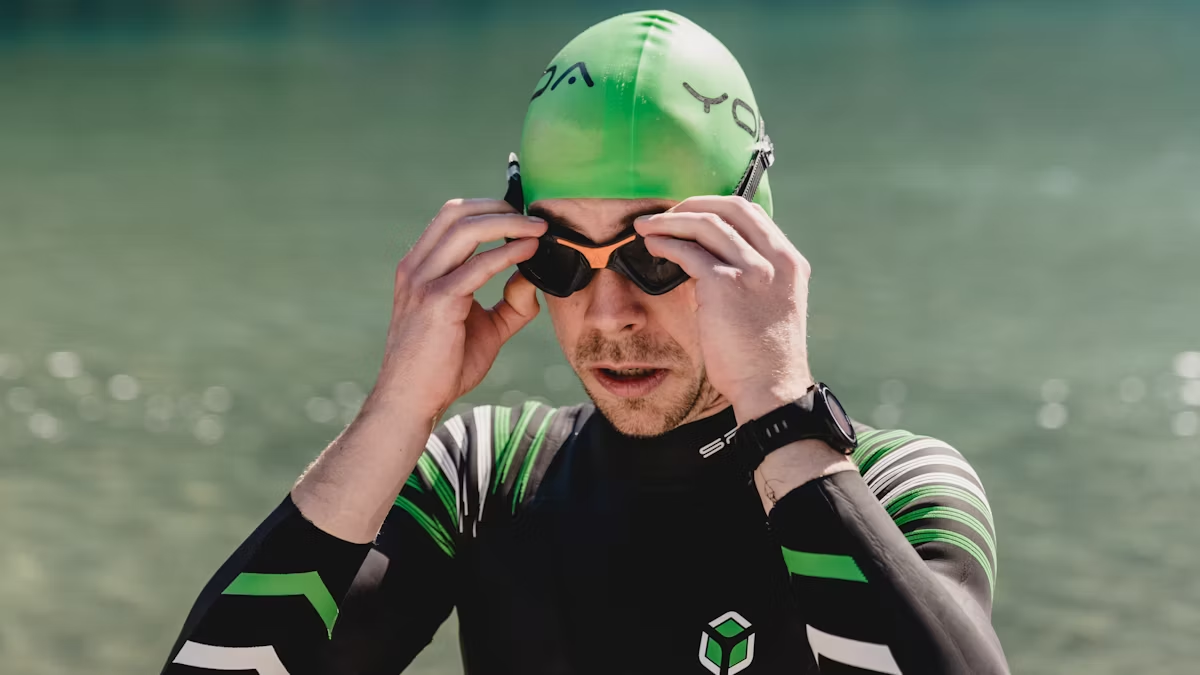
Необходимое снаряжение для повышения производительности
Необходимые аксессуары для плавания Вместе с гидрокостюмом создайте комплексный комплект, который обеспечит вам максимальную эффективность и комфорт во время занятий в открытой воде. Каждый элемент экипировки играет ключевую роль в оптимизации вашего опыта плавания, решая конкретные задачи, возникающие в водной среде.
- Очки для плавания: Очки для плавания защитить глаза от раздражителей и улучшить видимость под водой, позволяя вам четко ориентироваться в различных условиях.
- Шапочка для плавания: Хорошо подобранный шапочка для плавания Уменьшает сопротивление, не даёт волосам падать на лицо и обеспечивает теплоизоляцию, обеспечивая плавность движений и сохранение тепла. Плотно прилегающая шапочка обеспечивает плавность движений в воде и минимизирует потерю тепла головой, особенно в холодную погоду.
- Беруши и зажимы для носа: Беруши и зажимы для носа предотвращают попадание воды в чувствительные зоны, повышая комфорт и концентрацию внимания во время длительных заплывов.
- Ручные весла: Лопатки увеличивают сопротивление, укрепляют мышцы верхней части тела и улучшают механику гребков, способствуя продвижению вперед и совершенствованию техники.
- Плавники: Плавники обеспечивают дополнительную тягу и устойчивость, помогают развить силу ног и эффективность ударов, а также поддерживают правильное положение тела в воде.
Подберите гидрокостюм к другому снаряжению
Совместимость вашего гидрокостюма с дополнительным плавательным снаряжением — ключ к достижению идеальных результатов в воде. Совместимость материалов, посадка и эргономичный дизайн — три ключевых фактора при выборе снаряжения, дополняющего ваш гидрокостюм.
Например, выбор очков с регулируемыми ремешками, удобно облегающими неопреновый материал вашего гидрокостюма, предотвращает соскальзывание и дискомфорт во время длительных заплывов. Выбор силиконовых шапочек, обеспечивающих надежное сцепление с поверхностью гидрокостюма, помогает поддерживать оптимальную гидродинамику без ущерба для посадки и теплоизоляции. Обратите внимание на такие особенности, как регулируемые ремешки и размеры для гребков или ласт, подходящие для неопрена различной толщины, обеспечивая оптимальные результаты без ограничения подвижности и гибкости.
Оцените температуру воды
Температура воды при выборе гидрокостюма имеет решающее значение для комфортного и эффективного погружения. Различные температуры воды требуют разного уровня изоляции и плавучести. для оптимизации ваших результатов в водной среде.
Выберите правильный гидрокостюм для разных температур
Правильный гидрокостюм, подобранный под конкретную температуру воды, может существенно повлиять на результаты плавания, уменьшая сопротивление, улучшая плавучесть и совершенствуя технику. Подбирая экипировку под условия окружающей среды, вы обеспечите себе успех в плавании на открытой воде в различных условиях.
В холодной воде более плотный неопреновый купальник с длинными рукавами обеспечивает улучшенную изоляцию, сохраняя тепло тела и предотвращая переохлаждение. Его дополнительная плавучесть помогает лучше держаться на поверхности, снижая затраты энергии и повышая общую эффективность плавания.
И наоборот, при плавании в тёплой воде стоит выбрать более тонкий гидрокостюм или гидрокостюм со стратегически продуманной конструкцией панелей, который обеспечит лучшее рассеивание тепла и защиту от внешних воздействий. Лёгкий гидрокостюм для плавания обеспечивает свободу движений и предотвращает перегрев, позволяя вам сосредоточиться на гребках, не чувствуя ограничений из-за чрезмерной изоляции.
Толщина и плавучесть имеют значение
Толщина и плавучесть могут улучшить ваши ощущения от пребывания в воде, поэтому при выборе идеального гидрокостюма для водных развлечений вам следует найти гармоничный баланс между сохранением тепла и свободой движений.
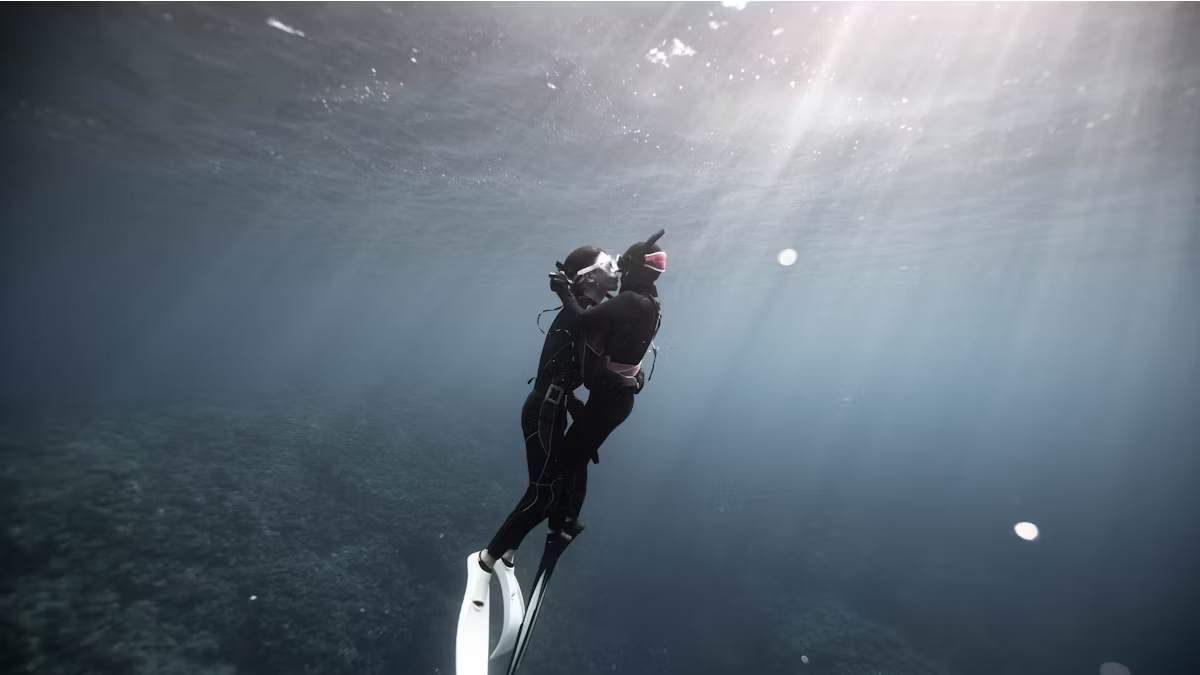
С одной стороны, толщина гидрокостюма существенно влияет на его плавучесть, определяя ваше движение в воде и взаимодействие с внешними силами. С другой стороны, плавучесть влияет на положение тела и эффективность гребков в воде, а также на общую гидродинамику.
Более толстые слои неопрена изначально обеспечивают большую плавучесть благодаря повышенной плотности и способности удерживать больше воздуха внутри материала. Эта дополнительная плавучесть помогает пловцам удерживаться на плаву с минимальными усилиями, обеспечивая правильное положение тела для обтекаемого движения. Поднимая определённые части тела выше в воде, более толстые гидрокостюмы помогают снизить сопротивление движению и оптимизировать скорость плавания.
Напротив, более тонкие гидрокостюмы обеспечивают меньшую плавучесть, но отлично смягчают естественные движения, не создавая ощущения чрезмерного ограничения или громоздкости. Пловцы, которые ценят маневренность больше, чем дополнительную плавучесть, часто выбирают более тонкие гидрокостюмы, чтобы сохранить плавность движений и быстрые переходы между различными техниками плавания.
Приобретите плавучий гидрокостюм, и вы сможете достичь поставленных целей во время плавания на открытой воде.
Конструкция шва обеспечивает долговечность
Швы гидрокостюма играют решающую роль в сохранении его структурной целостности и долговечности, особенно в сложных водных условиях. Освоив гидрокостюм с различными прочными конструкциями швов, вы можете быть уверены, что ваше снаряжение выдержит интенсивные нагрузки без ущерба для комфорта и функциональности.
Виды швов и их преимущества
Плоские швы
Эти швы плотно прилегают к коже, уменьшая натирание и раздражение при длительном плавании. Плоские швы обычно используются в тонких гидрокостюмах или гидрокостюмах, предназначенных для тёплой воды, где теплоизоляция не является приоритетом. Несмотря на гибкость и комфорт, они могут быть менее эффективны в предотвращении попадания воды по сравнению с другими типами швов.
Клееные и потайные швы
Этот метод изготовления швов предполагает склеивание неопреновых панелей друг с другом, а затем их частичную сшивку изнутри. Внешняя сшивка не проходит через весь материал, что минимизирует проникновение воды и повышает его долговечность. Как правило, он обеспечивает отличную изоляцию и прочность конструкции, что делает его пригодным для использования в условиях холодной воды.
Проклеенные швы
В конструкции с проклеенными швами водонепроницаемая лента наносится поверх швов, предотвращая проникновение воды и усиливая соединение неопреновых панелей. Эта технология герметизации повышает водонепроницаемость гидрокостюма и его износостойкость. Проклеенные швы часто используются в высокопроизводительных гидрокостюмах, предназначенных для спортивного плавания или экстремальных условий, где максимальная прочность имеет решающее значение.
Жидкий герметик для швов
Некоторые современные гидрокостюмы оснащены жидким герметиком, нанесённым на швы для дополнительной защиты от проникновения воды и истирания. Этот инновационный метод герметизации создаёт водонепроницаемый барьер, который повышает общую целостность гидрокостюма, сохраняя при этом гибкость и свободу движений в воде. Гидрокостюмы с технологией жидкого герметика обеспечивают превосходную защиту от протечек и длительный срок службы.
Почему долговечность имеет значение
Прочность вашего гидрокостюма напрямую влияет на его эксплуатационные характеристики, долговечность и общую ценность как неотъемлемой части экипировки для плавания в открытой воде. Приобретение прочного гидрокостюма даёт несколько ключевых преимуществ, которые улучшают ваши впечатления от плавания:
- Продолжительность жизни: Прочные методы изготовления швов позволяют выдерживать частое использование в различных водных условиях, не подвергаясь износу или повреждению.
- Стабильность производительности: Гидрокостюмы с усиленными швами сохраняют свою структурную целостность даже в сложных условиях, позволяя вам сосредоточиться на технике плавания, не отвлекаясь и не испытывая дискомфорта, вызванного поврежденным снаряжением.
- Защита от стихии: Прочная конструкция швов, например, проклеенные швы или жидкие герметики, создает барьер, предотвращающий проникновение холодной воды в гидрокостюм, сохраняя тепло и комфорт на протяжении всего плавания. Улучшенная защита от внешних факторов, таких как ветер, волны и мусор, гарантирует полное погружение в водные развлечения без каких-либо помех.
- Экономическая эффективность: Хотя прочные гидрокостюмы изначально могут стоить немного дороже, их долговременная надежность в конечном итоге экономит ваши деньги, поскольку снижает необходимость в частой замене из-за преждевременного износа или разрыва.
Рассмотрите тип молнии
Гидрокостюм на молнии легко надевать и снимать, но разные гидрокостюмы на молнии имеют разные функции. Гидрокостюм с молнией спереди и сзади На рынке распространены два типа. Хотя оба варианта обладают уникальными преимуществами, адаптированными к различным потребностям, оценка ваших приоритетов поможет определить, какой тип лучше всего соответствует вашим целям в плавании:
- Простота использования: Если вы цените быстроту процесса одевания и независимую регулировку снаряжения, то гидрокостюм с застежкой-молнией на спине может оказаться более подходящим вариантом из-за простоты надевания и широкого отверстия сзади.
- Безопасность: Для пловцов, которым нужна повышенная защита от проникновения воды и оптимальный комфорт без ущерба для подвижности, гидрокостюм с передней молнией может обеспечить большее спокойствие благодаря надежной системе застежки в области груди.
Чтобы узнать больше об этих двух купальниках, читайте дальше!
Гидрокостюмы с застежкой-молнией на спине
Гидрокостюм оснащен молнией, проходящей вдоль спины и обычно застегивающейся на длинный шнурок, что позволяет легко расстегивать и застегивать его без посторонней помощи. Эти гидрокостюмы популярны благодаря простоте надевания и снимания, что делает их идеальными для новичков и тех, кто предпочитает простой процесс одевания.
Плюсы:
- Легко надевать
- Обеспечивает быстрое удаление
- Минимизирует давление на грудь
- Менее дорогой
Минусы:
- Более подвержен попаданию воды через молнию
- Может вызвать попадание воды через молнию на спине.
- Может вызывать дискомфорт или натирание спины
- Ограниченные возможности вентиляции
Гидрокостюмы с передней молнией
В отличие от них, гидрокостюмы с передней молнией оснащены молнией, расположенной по всей длине груди, что позволяет легко надевать гидрокостюм через переднюю часть. Такая конструкция обеспечивает преимущество в виде минимизации попадания воды через молнии во время активного плавания, поскольку передние молнии менее подвержены случайному расстегиванию или разрыву по сравнению с задними. Пловцы, которым важна повышенная безопасность и снижение риска попадания воды в воду, часто выбирают гидрокостюмы с передней молнией для дополнительного спокойствия.
Прос:
- Лучшая герметизация от проникновения воды
- Уменьшено проникновение воды через молнию
- Более удобная посадка на шее
- Более легкий доступ к грудной клетке для вентиляции
Снас:
- Немного сложнее надевать
- Ограниченный диапазон движения при застегивании молнии
- Дороже, чем гидрокостюмы с застежкой-молнией на спине
- Расположение молнии может мешать движению
Покупайте у надежного бренда
Выбранный вами бренд не только отражает качество гидрокостюма, но и влияет на такие факторы, как долговечность, эксплуатационные характеристики и поддержка клиентов. Известные бренды с положительными отзывами и историей инноваций свидетельствуют о высочайшем мастерстве изготовления и внимании к деталям. Вы можете доверять им, обращая внимание на следующие показатели качества:
- передовые технологии
- высококачественные материалы
- рекомендации профессиональных спортсменов или экспертов по плаванию
Более того, известные бренды уделяют первостепенное внимание устойчивому развитию, используя экологичные материалы и этичные методы производства для минимизации воздействия на окружающую среду. Переработанные гидрокостюмы способствуют ответственному потреблению в индустрии водных видов спорта.
Кроме того, надёжные бренды предлагают комплексные гарантии, защищающие от производственных дефектов и преждевременного износа при нормальных условиях эксплуатации. Перед покупкой обратите внимание на следующие факторы, чтобы иметь возможность обратиться за помощью или заменой товара в случае возникновения проблем в течение гарантийного срока.
- срок гарантии
- детали покрытия
- любые особые инструкции по уходу, необходимые для сохранения действительности
- политика обмена продуктами
- процедуры возврата
- руководство по выбору размера
- обработка общих запросов
Кроме того, вы можете оценить оперативность реагирования и профессионализм службы поддержки клиентов бренда, чтобы определить уровень предоставляемой поддержки.
Часто задаваемые вопросы
Как надеть гидрокостюм?
Чтобы надеть неопреновый слитный купальник, сначала постепенно натяните его на ноги, обеспечив плотное прилегание в области лодыжек и коленей. Затем аккуратно натяните гидрокостюм на торс, аккуратно растягивая, чтобы не повредить швы. Застегните молнию или другой механизм застёжки в соответствии с конструкцией гидрокостюма, обеспечив герметичность и защиту от попадания воды. Перед погружением в воду отрегулируйте неопреновые вставки и манжеты, чтобы обеспечить комфорт и свободу движений.
Нужно ли мокнуть перед тем, как надеть гидрокостюм?
Необязательно мокнуть перед тем, как надеть гидрокостюм. Большинство пловцов предпочитают надевать его сухим, чтобы обеспечить плотное прилегание и герметичность. Намокание может затруднить плавное надевание гидрокостюма и снизить его общую эффективность в плане изоляции и защиты во время плавания.
Носите ли вы бюстгальтер с гидрокостюмом?
При использовании гидрокостюма для плавания в открытой воде нет необходимости надевать под него бюстгальтер. Гидрокостюмы разработаны для обеспечения поддержки и защиты как для мужчин, так и для женщин без необходимости использования дополнительного нижнего белья. Неопреновый материал гидрокостюма обеспечивает компрессию и безопасность, устраняя необходимость в дополнительных слоях одежды, которые могут стеснять движения или вызывать дискомфорт во время плавания.
